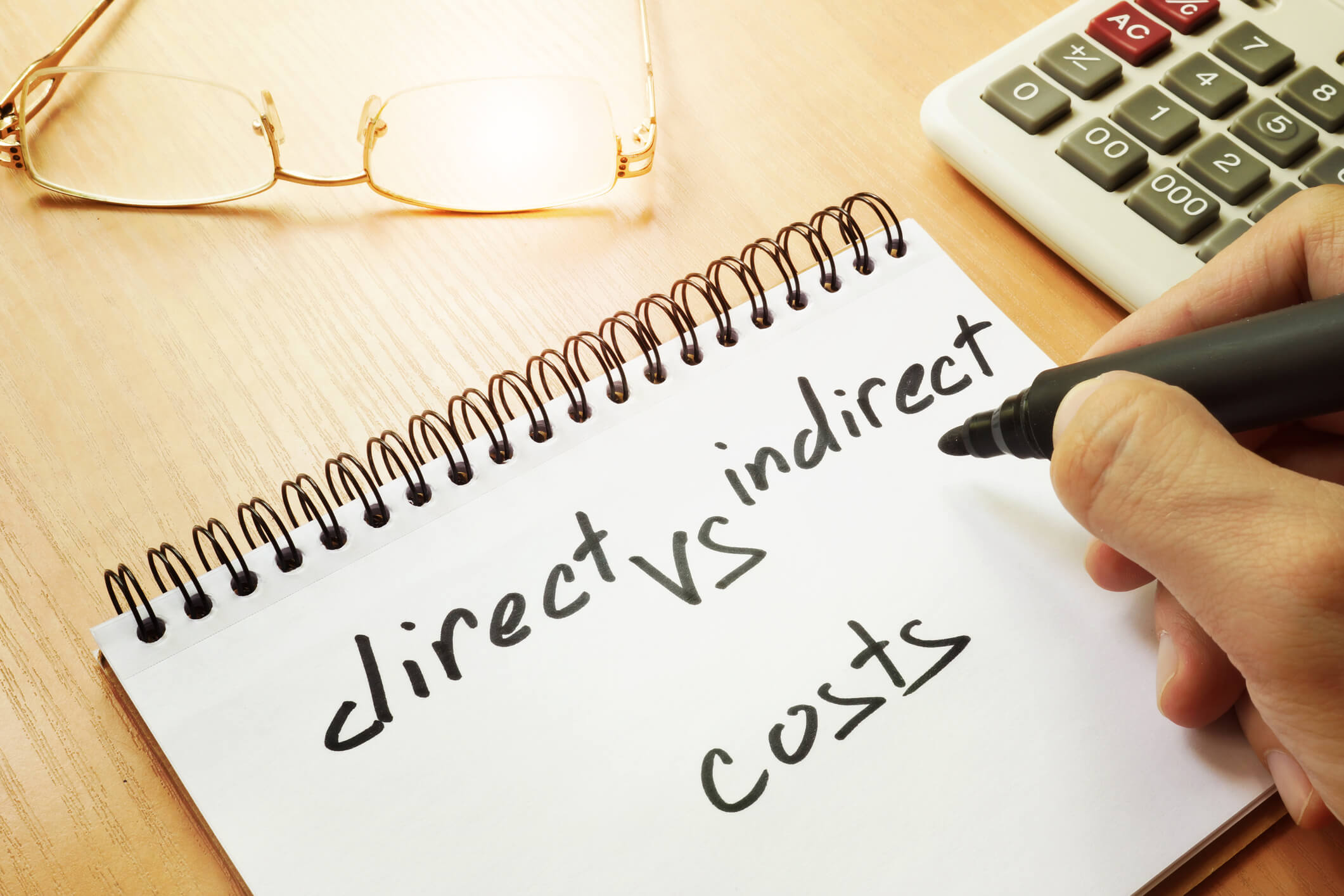When defining a product’s price, you must set it at a point covering total production costs. Production costs, however, include more than just raw materials or equipment costs. Payroll, marketing, and every company expense need to be factored in. Direct and indirect costs combine all expenses and resources a business expends to run its operations.
The primary difference between direct and indirect costs is their relation to the product or service being produced. The costs that directly relate to the product and service’s production are referred to as direct costs, such as direct labor, direct material, etc.
In comparison, the indirect association is closely related to costs that cannot be directly assigned to the production of a product, such as payroll, cost of employees, depreciation, general expenses, etc. Indirect costs are also known as overhead expenses. The concept may sound simple, but understanding the key differences between direct and indirect costs will allow you to allocate them in your accounting ledger correctly.
Direct Costs
Direct costs can be easily attributed to a specified cost object, a product, service, project, or department—for example, raw material, manufacturing equipment, software, and direct labor costs. Raw material and direct labor costs are two significant direct production costs. For instance, making furniture would include acquiring the wood and labor charges of the carpenter.
The costs of finished raw materials are usually counted as directly incurred costs. FIFO tracks them (first in, first out) and LIFO (last in, first off), two of the most popular accounting methods to record the product’s availability in stock.
To further understand how direct and indirect costs work, you must first understand fixed and variable costs. As the name suggests, fixed costs remain the same over time, while variable costs may alter periodically. Direct production costs are usually variable costs. However, payroll cost is one of the few exceptions that is fixed. Similarly, buying hardware for a smartphone would be counted as a direct, variable cost because it depends on the number of units produced.
Indirect Costs
Indirect costs are associated with all expenses that go beyond the production of a product. They are the business’s cost after all the direct costs are attributed. Everything a company requires to run its operations, such as indirect labor, rent, utility bills, and supplies, are indirect costs. These costs are not specified in producing a single product or service.
Labor costs can also be counted as direct or indirect, depending on the situation. If an HR resource is specifically assigned to the production of a product, the costs are direct. However, the salaries of cleaners and guards are indirect labor costs.
Marketing and advertising are indirect costs because they do not directly relate to a product’s production. Employee benefits and costs of acquiring accounting services are also indirectly related to production. The indirect cost can also be fixed or variable, depending on their occurrence. Rent is a fixed indirect cost, while utility bills are indirect variable costs.
Ambiguity
Certain costs lie in the grey area as direct or indirect costs. Hiring a consultant, printing, postage, and traveling costs are sometimes the cause of concern because placing them in any category is tricky. Companies place these costs in their respective categories based on their usage and relevance.

A company’s overhead rate is used to preserve liability and help determine the allocation of administrative costs between various departments. It is a ratio of total indirect costs and related direct costs. Departments with the highest ratio are allocated a more significant share of the indirect cost.
Significance
How you allocate direct or indirect costs also affects your tax payments. All overhead charges, electricity, and gas bills to run the equipment and machinery are tax-deductible. Therefore, according to IRS rules and regulations, you are supposed to classify all direct and indirect expenses accordingly.
Classifying government grants and funds as direct or indirect costs is significant as they come with strict policies that must be adhered to. Failing to do so can have important consequences for your business during auditing.
Indirect and direct costs are the key to calculating your cost of goods sold, and you cannot set a price for the product unless you figure out the manufacturing cost. Understanding each of them is vital for every business as it helps them to make critical strategic decisions.
 About Complete Controller® – America’s Bookkeeping Experts Complete Controller is the Nation’s Leader in virtual bookkeeping, providing service to businesses and households alike. Utilizing Complete Controller’s technology, clients gain access to a cloud platform where their QuickBooks™️ file, critical financial documents, and back-office tools are hosted in an efficient SSO environment. Complete Controller’s team of certified US-based accounting professionals provide bookkeeping, record storage, performance reporting, and controller services including training, cash-flow management, budgeting and forecasting, process and controls advisement, and bill-pay. With flat-rate service plans, Complete Controller is the most cost-effective expert accounting solution for business, family-office, trusts, and households of any size or complexity.
About Complete Controller® – America’s Bookkeeping Experts Complete Controller is the Nation’s Leader in virtual bookkeeping, providing service to businesses and households alike. Utilizing Complete Controller’s technology, clients gain access to a cloud platform where their QuickBooks™️ file, critical financial documents, and back-office tools are hosted in an efficient SSO environment. Complete Controller’s team of certified US-based accounting professionals provide bookkeeping, record storage, performance reporting, and controller services including training, cash-flow management, budgeting and forecasting, process and controls advisement, and bill-pay. With flat-rate service plans, Complete Controller is the most cost-effective expert accounting solution for business, family-office, trusts, and households of any size or complexity.



